The National Technical Museum in Luzern, Switzerland, is one of the the city’s top attractions, and being a bit partial to historic aircraft and cars, I headed along for a look. After spending time in the aviation and motoring exhibitions, I was wandering the remainder of the museum when I came across a display of winter downhill sporting equipment. After my recent visit to the Bergisel Ski Jumping Stadium in Innsbruck, I was keen to further my knowledge of potentially deadly European sports.
I have always enjoyed watching the bobsled events at the Winter Olympics, and here was my first chance to get a close look at a real bobsled. The Museum had this neat cutaway sled on display, allowing curious Aussie visitors to peek inside. I have to say, underneath the sleek, high tech carbon fibre, things appeared pretty rudimentary.
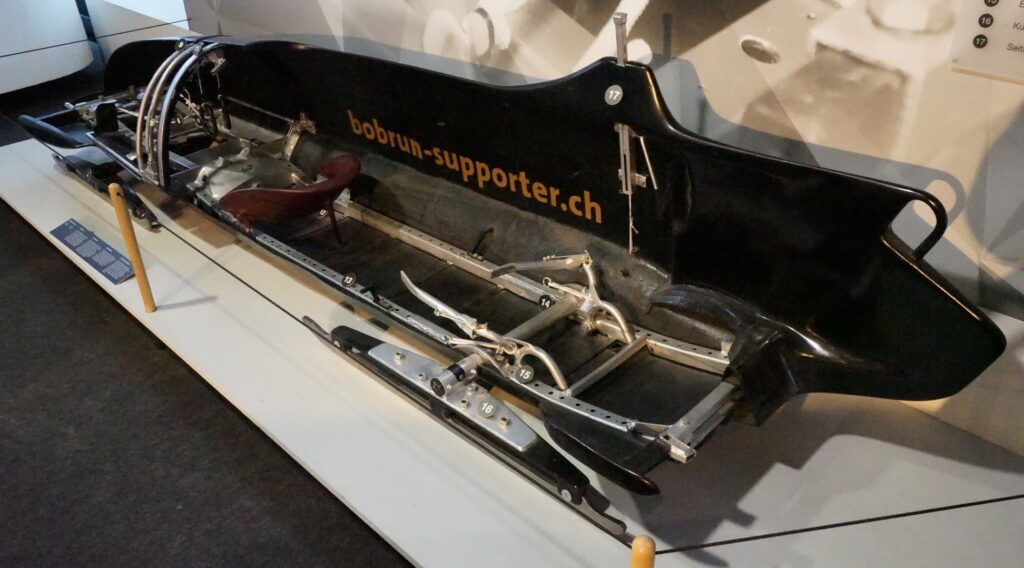
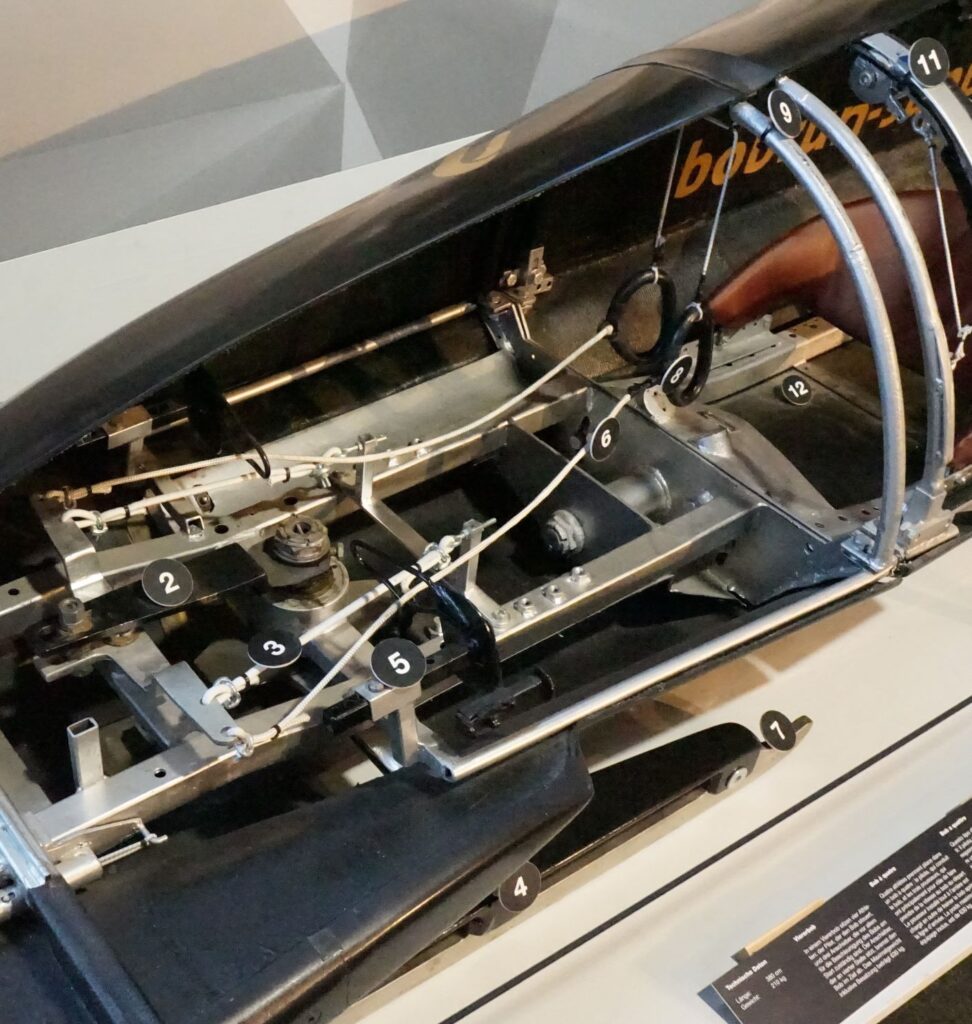
The steering gear looked like it had come off a billy cart…
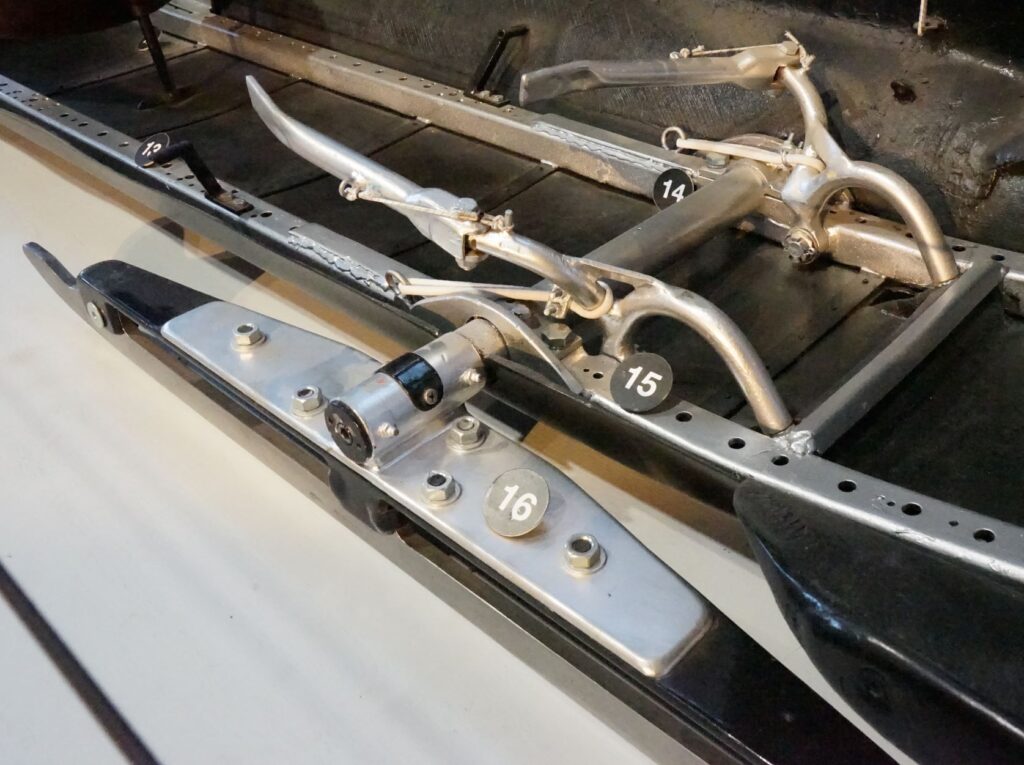
…and I have no idea how the brakes were supposed to stop an aerodynamic sled running on blades at nearly 150km/h.
Still, I liked the fact that sled tech seemed a little agricultural. After all, top level sport is supposed to be about human athletic performance, isn’t it?
The Museum had a few sets of bobsleigh runners on display, and explained that ‘Fashioned from a single piece of stainless steel, runners have to comply with certain guidelines with regard to their length and width…Teams arrive with various sets of runners adapted to different weather conditions and runs…’ Further, the information stated that sets of runners can cost ‘between CHF 2,3000 and 30,000 depending on their success’.
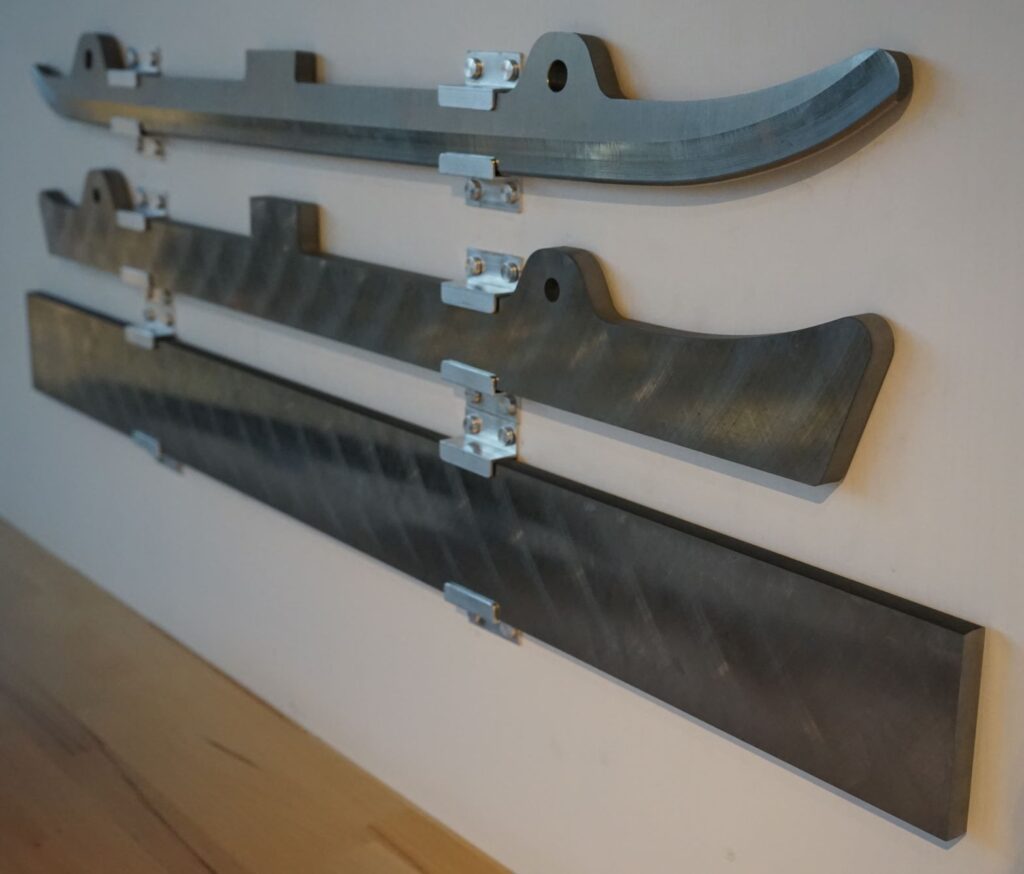
Now the Swiss franc is one of those rare currencies that is worth more than the euro, and at the time of writing one Swiss Franc equalled 1.72 Australian dollars. I’ll tell you what, if I’m going to stump up over 51 grand for a piece of metal I want it to be able to drive it up hills, not just slide down them on it.
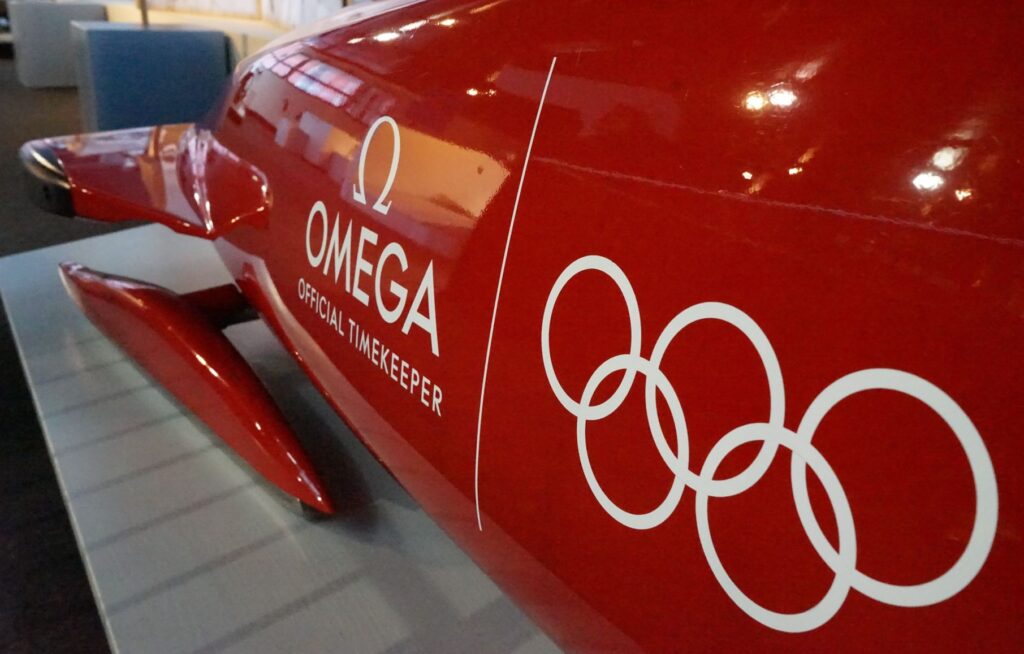
In addition to the cutaway sled, the Museum also had this racy red ‘monobob’ of display. Built for a single racer and complete with the Olympic Rings, it looked very slick.
Now although bobsled running gear didn’t seem particularly advanced, the Museum’s historic sled did provide a good comparison between the old and the contemporary. Despite being unlikely to match the speed of the new carbon fibre rockets, this old clunker definitely looked more dangerous. I could just imagine this beast turning over, spilling its crew onto the ice, then beating them to death with all that metal.
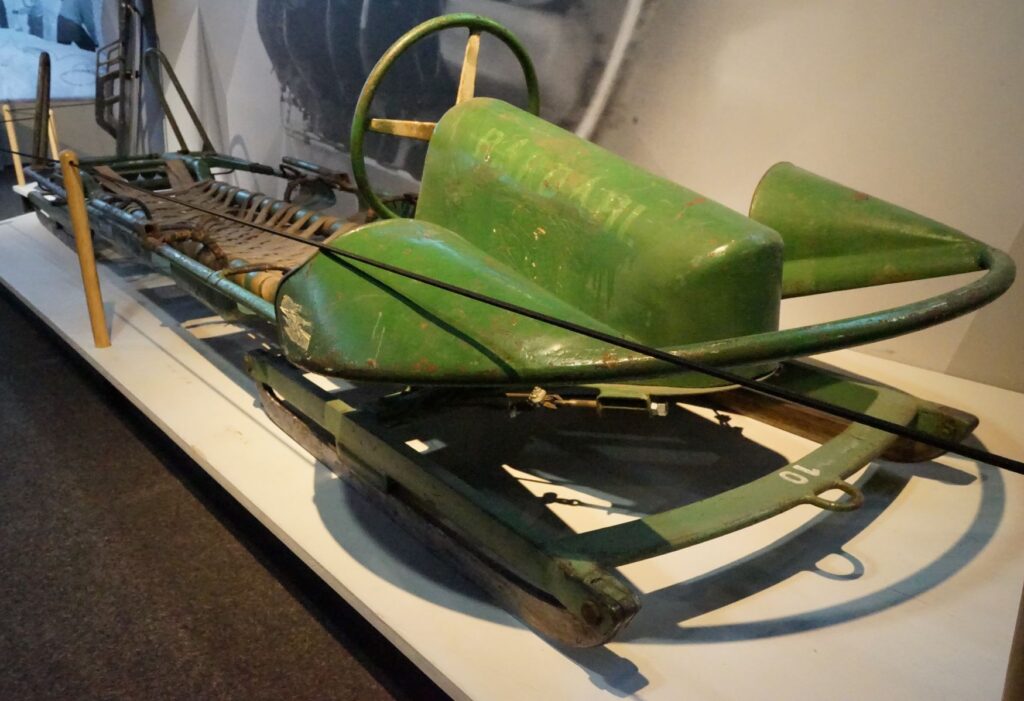
Despite the potential for massive accidents in bobsled racing, there are two other downhill disciplines that make bobsledding look like lawn bowls: luge and skeleton.
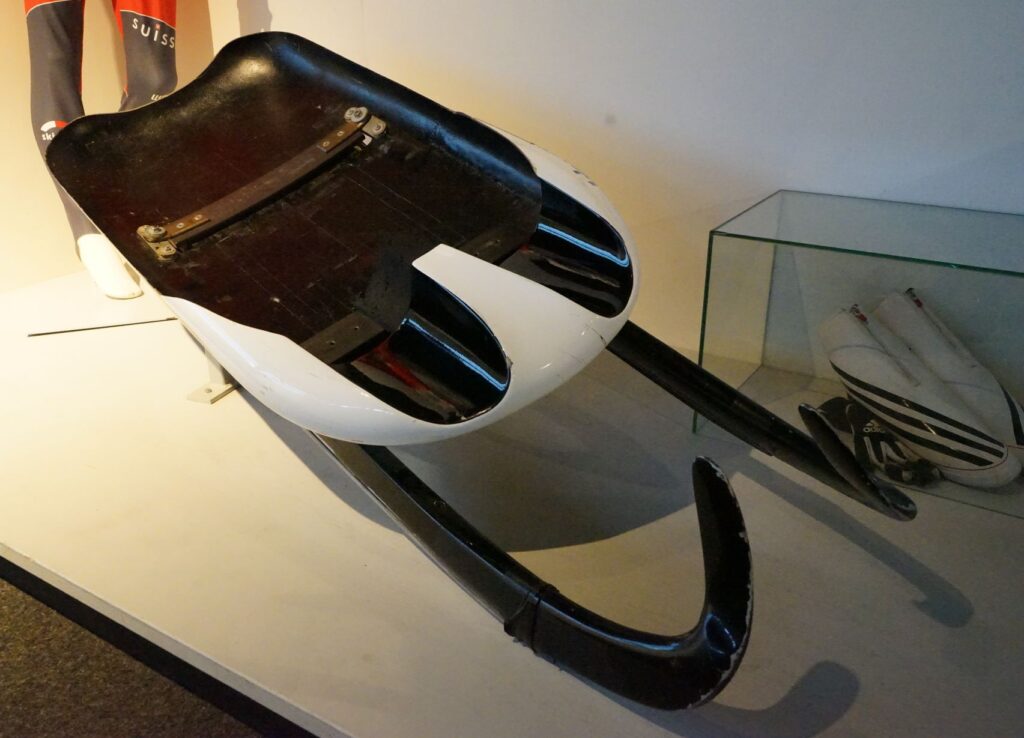
Luge involves an athlete barrelling feet first down a run going faster than forty bastards whilst lying back on a piece of fibreglass on rails.
The Museum explained that luge racers get off the start line using their hands, upon which they wear gloves covered in small spikes. Then it’s just a matter of steering by using their calf muscles to put pressure on the left or right blade, and thus avoiding leaving the run and ending up orbiting the earth.
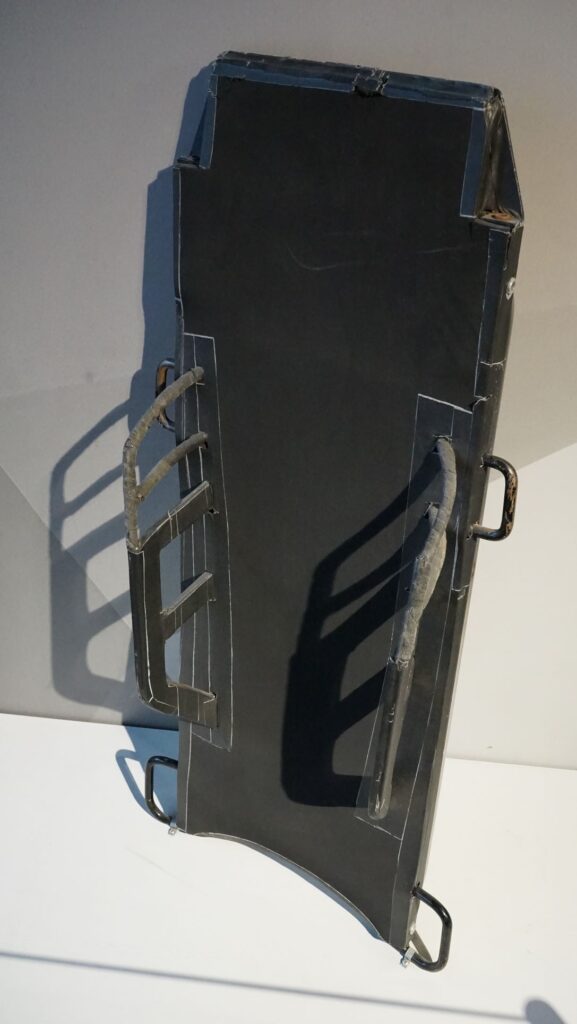
Even more basic than the luge, and arguably more lethal, is the skeleton. Skeleton sleds look like someone’s pulled the door off the shed and bolted a couple of handles to it. Information accompanying this exhibit stated ‘Skeleton athletes start by running alongside the skeleton bobsleigh pushing it in a stooped position before leaping aboard and racing down the run head first on their stomachs’. If you’ve ever watched this sport during the Winter Olympics, you’ll agree that no-one can question a skeleton racer’s commitment.
Finding a display of racing sleighs was an unexpected highlight of my trip to the National Technical Museum at Luzern. Although I already had a healthy respect for winter sports athletes, seeing the equipment up close, and learning more about each discipline, has further increased my admiration for these brave and crazy souls.
If you enjoyed this post, you may also like Where Eagles Dare, Sarajevo, Olympic City
Leave a Reply